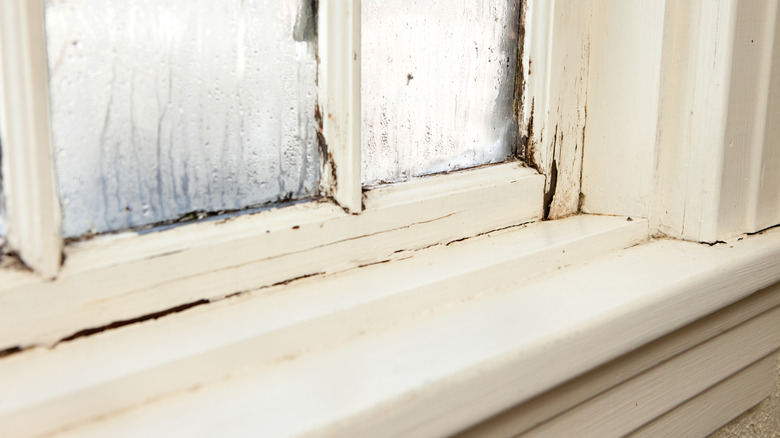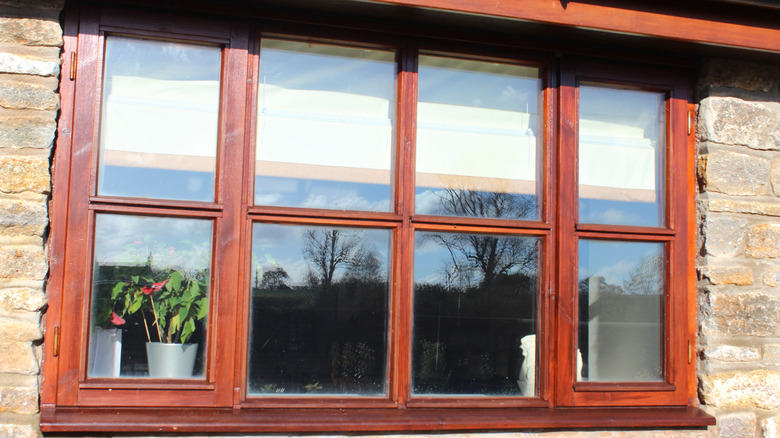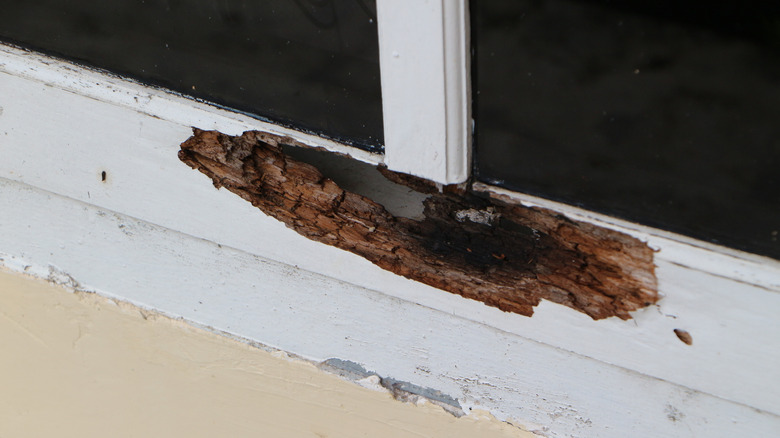Why Restoring Your Wooden Windowsills Is A Good Idea (And How To Do It)
We may receive a commission on purchases made from links.
I've owned several houses in my life, and as a professional woodworker, it has pleased me that all of them had wooden interior windowsills. I like the look of wood, stained, natural finish, or sometimes ... painted. And while wood is a cost-effective and durable material, it does need a bit of upkeep that fiberglass or composite sills do not to protect the wood and your house. Here are some important steps to take to keep your windowsills in good condition.
The first thing to do is to evaluate the windowsills. Are they painted, and is the paint smooth and intact? Are there cracks or chips? If the paint looks and feels good, then all you need to do is clean them well and go watch a ball game. What you will likely find is that the windowsills on southern-facing windows are in poorer condition than others. The sun's ultraviolet rays are hard on any finish. To repair the painted surface, start by cleaning it well with soap, water, and an abrasive pad. Then use sandpaper to smooth the surface, removing any loose paint flakes or chips.
If there are deep cracks or chips remaining, you have two choices: remove the paint with paint stripper and sanding down to bare wood or fill the cracks with an exterior caulk. In this case, you will trowel the caulk into the cracks and chips. Allow it to cure, apply a coat of exterior quality primer, and sand it smooth. If the cracks or chipped areas still show, apply a second coat of caulk and wipe it smooth with a damp rag. If it looks good, apply whatever paint you wish on the windowsills, and you are done.
Stained and varnished windowsills
If your wooden windowsills have a stain or varnish on them, you start out the same way — evaluating the finish. Clean the sills with soap and water. Is the finish smooth, or does it have cracks or chips? Does the varnish look cloudy? Are there areas where the wood has broken down and is soft?
If the finish is smooth and clear, apply a coat of wood conditioner and find a Netflix series to watch. If the finish is smooth but the varnish is cloudy (stinking UV rays!) there are a couple of options. The most aggressive — the best option if the finish is further cracked or chipped — is stripping or sanding the sills down to raw wood. There are benefits to this process. First, it allows you to apply a brand-new, state-of-the-art finish. Products today are better than those of 20, 40, or 60 years ago. Second, you can change the stain color of the windowsills. Often there have been cosmetic changes over the years that were not extended to the windowsills, and you can match the color and finish of the sills to the updated look.
A less aggressive option is to use a product like Howard's Restor-A-Finish. It's designed specifically to clear up the cloudy finish and even treat small cracks. Select the color option closest to your windowsill and wipe it on and off quickly following product instructions. The solvent in this formula helps fill the scratches and adds color to hide the chips. Let the surface cure for about a day and then a coat of wood conditioner and you are done.
Fixing rotted wood
With either painted or stained wood windowsills you may find areas where the wood has rotted or gone punky (soft) to the point that it is no longer structurally sound. If the rotting is bad enough, you'll need to call a professional to replace the whole windowsill and with damage that extreme, you'll want them to look at the window framing too.
But for pockets or small sections of wood that have broken down, you can use epoxy to solve the problem. The epoxy products for this come in two basic formulas, a liquid and a putty. Epoxy is a two-part resin-based product; you mix the two parts together and it begins to cure. Epoxy has a powerful adhesive quality that ensures it stays put. Use the liquid epoxy on flat surfaces where you can pour the mixture onto the problem area, work it in with a putty knife or similar item, and then let it cure. You'll need to sand it and refinish the area when it is cured. The wood filler putty is for spots where the wood is completely missing. It can be molded to complete the end of rotted-off sills or on rotted or broken edges.
Once cured, you'll likely need to further refine and shape it with sandpaper or files. Then, apply a finish to blend the repair to the rest of the sill. You will need to color the epoxy areas to match the surrounding wood. If you have a painted sill, the paint itself will suffice.


